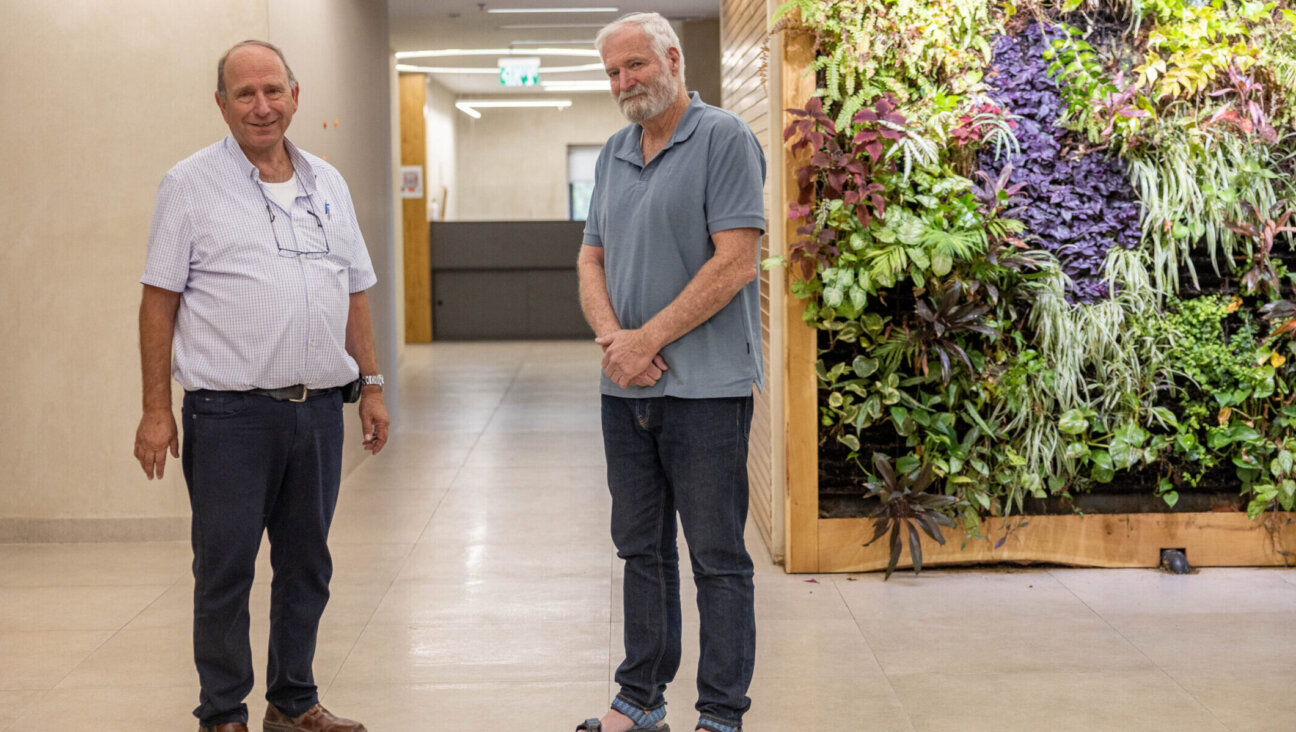How to sit shiva while social distancing

Robbie and her father Paul. Image by Courtesy of Roberta Caplan
For centuries, sitting shiva has provided Jewish mourners a meaningful ritual to gain closure after the death of a loved one. When you’ve just suffered a loss, it’s supremely comforting to have other people around — people to keep you fed, people to play with your kids, people with whom to share treasured family stories.
But these days, as communities across the country institute voluntary or mandatory social distancing protocols to prevent the spread of COVID-19, it’s nearly impossible to sit shiva as usual.
Coming to terms with a shiva process that precludes physical contact or even physical gatherings can be wrenching for bereaved families. But even in this new era, it’s possible to sit shiva well.
At the beginning of March, just as social distancing was becoming an unpleasant new reality in New York City, Roberta Caplan, the Forward’s National Director of Major Gifts and Events, sat shiva for her father Paul Caplan. Now, she’s sharing how she coped and what she learned. If you or someone you love is sitting shiva in the coming weeks, here’s what you should know.
What was different:
Robbie began sitting shiva with family members in Pittsburgh, her hometown, on March 11. At that point, most public gatherings in the city were proceeding as planned. Robbie’s family was able to welcome friends and loved ones into their home, although they did keep a big bottle of Purell by the condolence book. “I found myself stopping people as they came in, and telling them to Purell,” she recalls.
But as Robbie traveled back to New York City, where she planned to sit shiva in her own apartment, she began receiving calls from friends who had begun to social distance and could no longer attend. Understandably, in-person attendance was much lower in New York than in Pittsburgh.
What she’d do differently:
“As the mourner, you need that comfort and physical touch,” Robbie said. “It’s a solace, and not having it was the very hardest thing for me to accept.”
Many people who couldn’t physically attend shiva expressed their condolences by telephone. While Robbie appreciated the calls, she found that friends tended to ask the same well-intended but painful questions about her father’s illness and last days. For her, reliving his death over and over was one of the most draining aspects of sitting shiva.
To minimize these hard conversations, she suggests organizing a conference call — or even, as working and learning from home forces us all to become more technologically adept, a Zoom conference — to share any important information about the death to family and friends all at once.
If you’re making a shiva call by telephone in the next few weeks, steer clear of potentially intrusive questions about the deceased’s last days, which the mourner may already have answered dozens of times. Instead, focus on the mourner’s emotional health, or what you can do to help from afar.
Robbie was also buoyed by written tributes to her father’s life, sent by Facebook and email. Those memories can comfort families for months after a death. And in an era where in-person conversations are few and far between, they can provide a much-needed sense of closure. “Social media really came through,” Robbie said.
If you’re sitting shiva while social distancing, you can reach out to friends and ask them to send notes. And if you know someone who just lost a loved one, try sending one unsolicited — you never know how comforting it will be.
A message from our CEO & publisher Rachel Fishman Feddersen

I hope you appreciated this article. Before you go, I’d like to ask you to please support the Forward’s award-winning, nonprofit journalism during this critical time.
We’ve set a goal to raise $260,000 by December 31. That’s an ambitious goal, but one that will give us the resources we need to invest in the high quality news, opinion, analysis and cultural coverage that isn’t available anywhere else.
If you feel inspired to make an impact, now is the time to give something back. Join us as a member at your most generous level.
— Rachel Fishman Feddersen, Publisher and CEO























